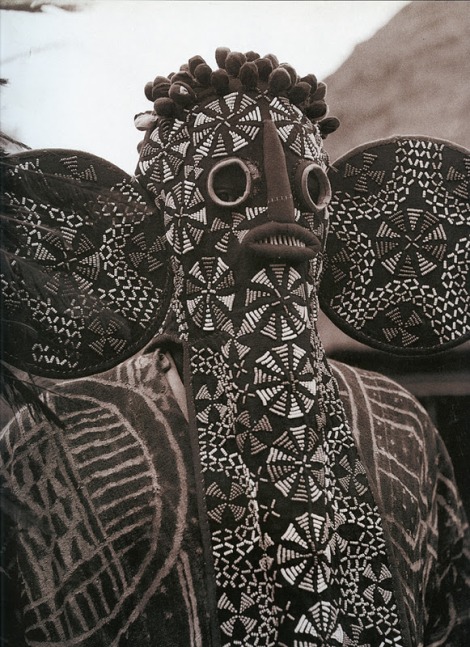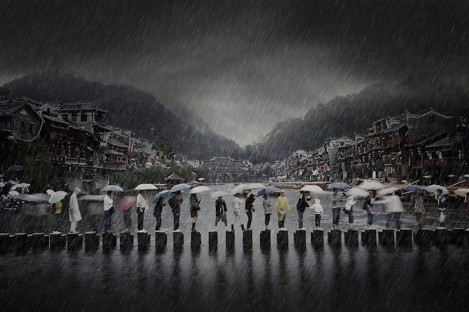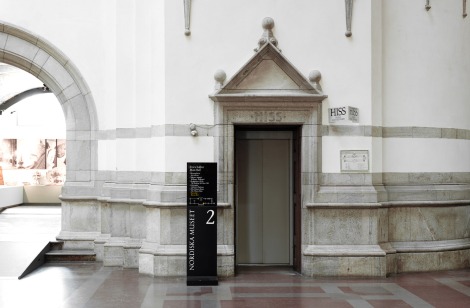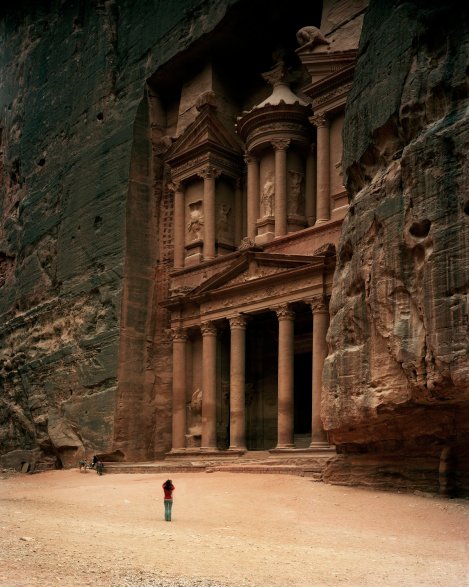1855 von König Maximilian II. gegründet, zählt das Bayerische Nationalmuseum zu den großen kunst- und kulturhistorischen Museen in Europa. Den Kernbestand der Sammlungen bildet der Kunstbesitz des Hauses Wittelsbach. Das nach den Entwürfen Gabriel von Seidls in den Stilformen des Historismus errichtete Gebäude mit seinen einzigartigen historischen Interieurs ist einer der originellsten und bedeutendsten Museumsbauten aus der Zeit um 1900.
In einem abwechslungsreichen Rundgang erschließen sich dem Besucher die abendländischen Kunstepochen von der Spätantike bis zum Jugendstil. Die Schausammlung bietet neben zahlreichen Meisterwerken der Skulptur und Malerei, kostbare Elfenbein- und Goldschmiedearbeiten, Bildteppiche, Möbel, Waffen und erlesenes Porzellan.
Die weltberühmte Krippensammlung umfasst mehr als 60 illusionistisch aufgebaute Weihnachtsszenen mit einer Vielzahl von Figuren, die zwischen 1700 und 1850 in Neapel, Sizilien und dem Alpenraum entstanden sind.
fonte: @edisonmarioti #edisonmariotti
http://www.bayerisches-nationalmuseum.de/index.php?id=276
Sammlungen
Das Bayerische Nationalmuseum zählt zu den großen europäischen Museen, die sowohl der Bildenden Kunst als auch der Kulturgeschichte gewidmet sind. Den Kern der Sammlungen bildet der königliche Kunstbesitz der Wittelsbacher, doch die vielseitigen Bestände greifen weit über die Grenzen Bayerns hinaus. In einem Rundgang durch stilistisch auf die Sammlungsobjekte bezogene Ausstellungsräume werden die verschiedenen kulturgeschichtlichen Epochen von der Spätantike über das Mittelalter, dieRenaissance, den Barock und das 19. Jahrhundert bis zum Jugendstil lebendig. Ausgewählte Fachabteilungen wie die Sammlungen der Porzellane, Elfenbeine, Musikinstrumente, Möbel, Textilien,Goldschmiedekunst und Waffen vermitteln ein anschauliches Bild europäischer Kunst und Geschichte.
000000000000000000
Ali Reza Sarvdalir
Chambery, La Ruedes Portiques
This is a classic arcaded street. Notice that while the buildings are very similar, they have subtle and important differences that hold the eye. Notice also that the street has been kept quite narrow.
The effective width of the street is increased by the width of the arcades.
Barcelona, Sal6n de San Juan
This may technically be a square; I do not know if the street runs far enough behind the camera to qualify as a boulevard. In most other respects, it is fairly standard, although the archway through which the roadway passes is a somewhat unusual constriction.
It appears that the land once sloped away to the left. While most of the area was filled to make it level, there is a drop-off at the left-hand side, which breaks the integration of the buildings on that side with the street. The extremely broad sidewalk and trees help to mute this effect, but it cannot entirely be disguised.
Nancy, Place de la Carrière
This is technically a square, not a boulevard - it is too short to be a true boulevard. Nevertheless, it has all of the other attributes of a boulevard and deserves study as such. One very distinctive trait is the row of nearly identical buildings on the far side of the street. Unlike a true boulevard, the view is closed off at the far end (and the near end as well). This gives the space a very comfortable sense of enclosure. Today, both side streets sport rows of parked cars on each side, which hugely detracts the attractiveness of this
once lovely space.
--
This is a far more formal scene The church tliat closes the view is an extraordinary building, lavishly detailed and beautifully proportioned. It does not appear to be centered precisely on the street from which the photograph was taken, and it may stand at a slight angle to it. In earlier times, people were not concerned about precisely rectilinear geometry - they were concerned with proportion and scale, with balance and not necessarily with mirror symmetry, and with interesting detail rather than geometrical purity. I think it's a better approach to building urban areas that hold our interest. The stairs mean that cars probably still cannot negotiate this street.
Rochefort, Eglise
The enclosure here is complete but does not feel that way. The street is quite wide and the buildings rather low. The presence of telephone polls, on both sides of the street, is a real blot. From this vantage, the placement of trees has an unsatisfactory, random quality to it, although from farther up the street it might be apparent that the two trees in the foreground are the last in a regular series. While regular planting seems terribly artificial in natural settings (as in a managed forest), it seems that street trees should be planted on a regular
pattern.
Interlaken. Grand Hotels Victoria and
Jungfrau
These are two palatial and beautifully designed hotels, built of fine materials and set in lovely gardens, we cannot provide this level of luxury for more than a small fraction of society to enjoy. There is, however, no reason we cannot provide this level of quality in public spaces that everyone can enjoy. It is a terrible indictment of western society that very few nations choose to do so. This hotel is still there today, in nearly the same form, although an ugly portico has been added for cars, of course. Today, one might rather not sit in the afternoon sun because of the cars streaming past just a few meters away.
Nancy, Porte Stanislas
the gate serves more to frame a view than to create a sense of enclosure Its function as a frame for a view has been assisted in this case by the photographer's choice of location to set up his tripod, which places the distant spire right under the top of the arch. We see this often in photography without being aware of it - good spaces almost always have a "perfect" vantage point. If' s the best place to stand. Photographers seek these places out almost instinctively. Good urban design includes making sure that such places are there to be found.
Genoa, Porta dd Vacca
This tail, stately gate frames an intimate view up the street, which appears to be just five or six meters wide. The buildings are four or five stories tall, but some of the floors are high, leading to building that are much taller than the street is wide. Notice that the sheet curves away, but not immediately. The relationslhips between the length of straight street, the width of the street, and the degree of curvature all combine to show us the facades of several buildings, albeit at quite an acute angle. The form of the enclosed area is highly satisfactory and very comfortable, in my opinion. Some people find these proportions claustrophobic, but they are common in the older
parts of many cities.
Perugia, La Via Appia
This gate frames a lovely vista from a hilltop looking out over another hill. The view would still be unusually attractive even without the gate, but the addition of the gate turns this view into a work of art. Note that from a distance, the houses appeal" almost as a jumble, scattered apparently at random across the hillside. Rather, the paths of the streets is almost certainly governed by minor features in the topography.
This is a typical central market. Since it's called the "Old Market," there is probably another market of similar size elsewhere in the city. From the sheer size, it is evident, however, that this market was still very important at the time this photograph was made. Markets tend to be untidy places. In well-am cities, the market square is thoroughly cleaned at the end of the day and it would appear to be a normal street. Notice that the ground floors arc all a dark color, whereas most of the upper stories are light colored.
Trier, Hauptmarkt
This is a fine market square surrounded, by good buildings. Although the church appears to be slightly removed from the square, it still towers above the square and is thus present in the square. There is a rather large variation in the scale of the buildings fronting on the square. In the days when this photograph was taken, techniques of photography made it nearly impossible to record clouds. Whenever you see clouds in photographs from this period, they are almost certainly cither painted in or printed in from other negatives.
Trier, Hauptmarkt
This is a fine market square surrounded, by good buildings. Although the church appears to be slightly removed from the square, it still towers above the square and is thus present in the square. There is a rather large variation in the scale of the buildings fronting on the square. In the days when this photograph was taken, techniques of photography made it nearly impossible to record clouds. Whenever you see clouds in photographs from this period, they are almost certainly cither painted in or printed in from other negatives.
Beausolell, Boulevard de la Tour
Tliis is a city on a hillside. The foreground slopes gently enough, but the street gives way to stairs in the middle distance, and it's quite a climb to the upper streets, this street is on the border between narrow and wide, and one might well compare it to some of the narrower streets. There is probably good stone to be found not far from tliis city, to judge by the large amount of ornate stone carving in evidence. As we see in carfree streets everywhere, pedestrians will make use of the full width of the street when they can.
Bellagio, Via Serbelloni
This street of stairs may be the most photographed street in Italy. This is a minor commercial center that appears to supply local needs. The balcony, the lamp, and the stairs tripping up the hill are all quiet attractions that help to make this street so luscious.
Pierrcfonds, La Rue Notre Dame
The magnificent castle looms over the modest houses at its foot, i would guess that this was originally a defensive structure that was later modified as a residence. The castle was apparently built in the 14th Century but dismantled in the 17th Century. It was rebuilt in the 19th Century by architect Eugène Viollet-Le-Duc for Napoleon III.Those living just outside the city gates enjoyed some economic advantages, such as lower real estate taxes and sometimes entry tariffs for goods, they were not protected against raids and would have had to take shelter within the castle during attacks
Innsbruck, Mari Theresienstrass
could be regarded as a square. It actually appears that the street swells here, possibly to make room for the monument. It is otherwise typical of wide streets. The buildings are obviously of high quality, and it seems evident that this is an important commercial area. The addition of the miniature trees at the foot of the monument is peculiar.
Ali Reza Sarvdalir
00000000000000 ...br
Ali Reza Sarvdalir
Chambery, La Ruedes Portiques
Esta é uma rua arcadas clássico. Este aviso, enquanto os edifícios são muito semelhantes, eles têm diferenças sutis e importantes que mantêm o olho. Observe a anche rua que foi mantido bastante estreita.
A largura efectiva da rua é aumentada a por a largura das arcadas.
Barcelona, Sal6n de San Juan
Isso pode tecnicamente ser um quadrado; Eu não sei se a rua é executado longe o suficiente por trás da câmera para se qualificar como um boulevard. Na maioria dos outros aspectos, é bastante normal, embora o arco através da estrada passa Que é uma constrição um tanto incomum.
Parece que o terreno inclinado uma vez longe para a esquerda. Enquanto a maior parte da área foi preenchida para torná-lo nível, há um drop-off no lado esquerdo, que quebra a integração dos edifícios naquele lado com a rua. A calçada e árvores extremamente ampla ajuda para silenciar esse efeito, mas não pode inteiramente ser disfarçado.
Nancy, Place de la Carrière
Isso é tecnicamente um quadrado, não um boulevard - é muito curta para ser um verdadeiro boulevard. No entanto, ele tem todos os outros atributos de um boulevard e merece estudo como tal. Uma característica muito distinta é a fila de edifícios quase idênticas no lado da let da rua. Ao contrário de um verdadeiro boulevard, a vista é fechada na extremidade distante (e final perto também). Isto dá ao espaço uma sensação muito confortável de caixa. Hoje, ambas as ruas laterais linhas desportivas de carros estacionados de cada lado, que prejudica enormemente a capacidade de atracção deste
onças espaço encantador.
-
Isto é para ter Opiniões cenas mais formais tliat A igreja fecha a vista é um edifício extraordinário, ricamente detalhado e bem proporcionado. Ele não parece ser centrado precisamente na rua de que a fotografia foi tirada, e pode ficar em um pequeno ângulo para ele. Nos tempos antigos, as pessoas não eram Preocupado com geometria retilínea precisamente - eles estavam preocupados com a proporção e escala, com equilíbrio e não necessariamente com espelho simetria, e com detalhe interessante ao invés de pureza geométrica. Eu acho que é a melhor abordagem para a construção de áreas urbanas que mantêm o nosso interesse. As escadas significa carros que provavelmente ainda não pode negociar esta rua.
Rochefort, Eglise
O gabinete aqui é completa, mas não se sentir assim. A rua é bastante amplo e os edifícios bastante baixo. A presença de pesquisas telefônicas, em ambos os lados da rua, é uma verdadeira mancha. Com esta vantagem, a colocação de árvores tem uma qualidade insatisfatória, aleatório a ele, embora a partir mais para cima da rua que poderia ser evidente que as duas árvores no primeiro plano é a última em uma série regular. Enquanto regulares Parece plantio terrivelmente artificial em ambientes naturais (como em uma floresta manejada), parece que devem ser plantadas as árvores da rua de uma forma regular
padrão.
Interlaken. Grand Hotel Victoria e
Jungfrau
Estes são dois hotéis palacianos e belamente projetadas, construídas com materiais finos e setembro em jardins encantadores, não podemos Lojas fornecer este nível de luxo para mais do que uma pequena fração da sociedade para desfrutar. Há, no entanto, não há razão não podemos Lojas fornecer este nível de qualidade em espaços públicos que todos possam desfrutar. É uma terrível acusação da sociedade ocidental que muito poucas nações optar por fazê-lo. Este hotel ainda está lá hoje, em quase a mesma forma, embora um patamar feio foi adicionada para carros, é claro. Hoje, pode-se preferir não se sentar no sol da tarde Por causa dos carros de streaming passado, a poucos metros de distância.
Nancy Porte Stanislas
o portão atende a mais para enquadrar uma visão do que para criar uma sensação de clausura Sua função como um quadro para uma visão tem sido assistida, neste caso, por opção do fotógrafo de localização para a instalação Sua tripé, o que coloca a torre distante à direita sob o topo do arco. Vemos isso em fotografia Muitas vezes sem ter consciência disso - bons espaços quase sempre têm um "perfeito" ponto de vantagem. Se é o melhor lugar para ficar. Esses lugares Fotógrafos buscar quase instintivamente. Bom design urbano inclui assegurar que tais lugares estão lá para ser encontrado.
Genoa, Port dd Vacca
Esta cauda, porta imponente quadros uma visão íntima até a rua, que parece ser apenas cinco ou seis metros de largura. Os edifícios são quatro ou cinco andares de altura, mas alguns dos pisos são de alta, levando à construção que são muito mais alto do que a rua é larga. Repare que as curvas de chapa de distância, mas não imediatamente. Os relationslhips entre o comprimento da rua em linha reta, a largura da rua, eo grau de curvatura todos se combinam para nos mostrar as fachadas de vários edifícios, ainda que em um ângulo muito agudo. A forma da área fechada é altamente satisfatório e muito confortável, na minha opinião. Algumas pessoas acham claustrofóbico Essas proporções, mas eles são comuns no mais velho
partes de muitas cidades.
Perugia, A Via Appia
Esta é a porta molda uma vista adorável do topo de uma colina com vista sobre outro morro. A vista ainda seria extraordinariamente atraente mesmo sem o portão, mas as adições do portão transforma este ponto de vista em uma obra de arte. Note-se que a partir de uma distância, as casas apelar "quase como um amontoado, espalhados aparentemente ao acaso em toda a encosta. Em vez disso, os caminhos das ruas é quase certamente Governado por características menores na topografia.
Este é um mercado central típico. Uma vez que é chamado de "Mercado Velho", provavelmente há um outro mercado de dimensão semelhante em outras partes da cidade. A partir do tamanho, é evidente, no entanto, que este mercado ainda era muito importante no momento em que esta fotografia foi feita. Os mercados tendem a ser lugares desarrumados. Na bem-am cidades, a praça do mercado está completamente limpo no final do dia e que parece ser uma rua normal. Observe que o arco andares térreos para uma cor escura, enquanto a maioria dos andares superiores são de cor clara.
Trier, Hauptmarkt
Esta é uma praça do mercado bem cercado, por bons edifícios. Embora a igreja Parece ser um pouco afastado da praça, ainda se eleva acima da praça e é, portanto, presente na praça. Há um bastante grande variação na escala dos edifícios de frente para a praça. Nos dias Quando esta fotografia foi tirada, técnicas de fotografia tornou quase impossível para gravar nuvens. Sempre que você vê nuvens em fotografias a partir deste período, eles são quase certamente cither em pintado ou impresso no de outros negativos.
Trier, Hauptmarkt
Esta é uma praça do mercado bem cercado, por bons edifícios. Embora a igreja Parece ser um pouco afastado da praça, ainda se eleva acima da praça e é, portanto, presente na praça. Há um bastante grande variação na escala dos edifícios de frente para a praça. Nos dias Quando esta fotografia foi tirada, técnicas de fotografia tornou quase impossível para gravar nuvens. Sempre que você vê nuvens em fotografias a partir deste período, eles são quase certamente cither em pintado ou impresso no de outros negativos.
Beausolell, Boulevard de la Tour
Tliis é uma cidade em uma encosta. As pistas de primeiro plano suavemente o suficiente, mas a rua dá lugar a escadas na meia distância, e é bastante uma subida para as ruas superiores, esta rua é na fronteira entre estreito e largo, e um poderia compará-lo a alguns dos mais estreito ruas. Há provavelmente boa pedra a ser encontrado não muito longe de tliis cidade, a julgar pela grande quantidade de ornamentado escultura em pedra em evidência. Como podemos ver nas ruas Carfree em todos os lugares, os pedestres fará uso de toda a largura da rua quando podem.
Bellagio, Via Serbelloni
Esta rua de escadas pode ser a rua mais fotografada na Itália. Este é um pequeno centro comercial que aparece para suprir as necessidades locais. A varanda, a luz, e as escadas de disparo até a colina são tranquilos Isso atrações ajudar a fazer esta rua tão delicioso.
Pierrcfonds, La Rue Notre Dame
O magnífico castelo paira sobre as casas modestas em seu pé, eu acho que este foi originalmente uma estrutura defensiva que mais tarde foi modificado como uma residência. O castelo foi construído aparentemente no século 14, mas desmantelado no século 17. Foi reconstruída no século 19 pelo arquiteto Eugène Viollet-Le-Duc para Napoleon III.Those de estar do lado de fora dos portões da cidade se algumas vantagens económicas, tais como baixos impostos imobiliários e, por vezes, as tarifas de entrada para os produtos, eles não foram protegidos contra ataques e teria sido obrigado a refugiar-se dentro do castelo durante ataques
Innsbruck, Mari Theresienstrass
Pode ser considerada como um quadrado. Parece que realmente a rua incha aqui, possivelmente para fazer o quarto para o monumento. É outro modo típico de ruas largas. Os edifícios são, obviamente, de alta qualidade, e parece que evidente esta é uma importante área comercial. As adições das árvores em miniatura ao pé do monumento é peculiar.
Ali Reza Sarvdalir































